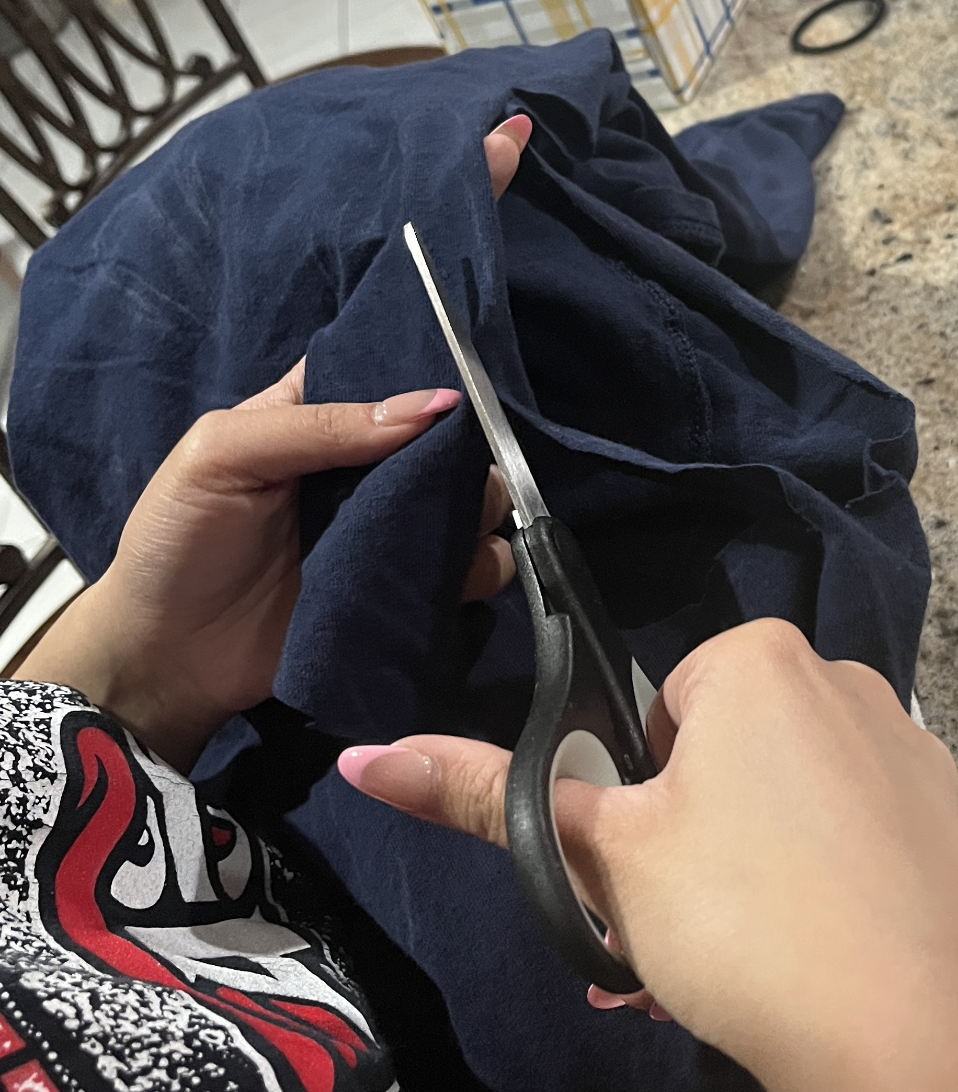Columnist Examines the Show that may ‘Survive until the Collapse of Society’

November 23, 2020
Since we can’t go to Broadway until next spring, let’s take a look at the genius behind one of the theater world’s greatest achievements: “Into the Woods.”
When “Into the Woods” opened on Broadway in 1988, “Phantom of the Opera,” “Carrie,” “A Chorus Line,” and “Anything Goes” were all at the height of their popularity. To break onto the Great White Way among such hits required an excellent musical that went above and beyond in every aspect: costumes, direction, book, music and technical ability. “Into the Woods” did just that—demanding 10 Tony nominations and three Tony Awards.
The story is framed around six main characters: The Baker, The Baker’s Wife, Cinderella, Little Red Riding Hood, Jack, and The Witch. Because the audience starts with a preconceived understanding of each character’s backstory, the plot is able to make constant shifts from preconceived notions to surprising twists, creating a stark comedic context. Little Red Riding Hood becomes a jaded, violent girl. Cinderella becomes a grief-stricken relationship expert.
These juxtapositions are central to the show’s charm, constantly subverting the audience’s expectations. All of the characters are central to classic fairy tales within their own right. These fairytales are portrayed on stage with their usual endings, and then the story continues. Audiences within the original run of the 1988 production had to be told to stay by the ushers. They believed at the end of Act 1 the show was over because each fairytale character had reached their usual conclusions.
Act 2 is the show’s true “jewel.” The act opens with each character being dissatisfied and yearning for something they lost when their stories reached their “conclusion.” Additionally, a giant is now terrorizing their land. The story reaches a natural climax when each of the characters come face to face with their own personality faults.
The score, one of the best in the last 100 years, is the icing on top of James Lapine’s near perfect book. The score is fairytale-esque with a lot of string instruments and a light and fast air. The music is almost perfect thematically, as each character has their own underscore. This underscore appears within their own personal solos and scenes in which they experience the most growth or change. This attention to detail is rare. Stephen Sondheim is perhaps the only composer talented enough to accomplish something so individualistic, yet cohesive.
Technically, the show is not much to marvel at. Yet it maintains its “larger than life” personality. The set is made of a large painted backdrop, which is used to set the scene of the woods. A few trees line the stage to give it some dimension. Adding to this level of technical minimalism genius is the costumes. The production utilizes the childish nature of the fairytales. Cinderella wears a large ball gown, Little Red Riding Hood dons a white and red child’s frock, The Baker and The Baker’s wife, simple peasant wear. The Witch and the supporting characters are the shining marvel of the costume department. The witch appears in a haggard, tortured and ugly costume for Act 1. In the finale of Act 1 she transforms into a strapping, beautiful, young woman. A puff of smoke, and the actress simply twirls as her gown transforms.
The simplicity of the set and costumes allow the book and score to soar. The audience does not need to be distracted with effects or dazzlement, as they are enveloped within a story that requires only their eyes and ears.
Personally, there are a few standouts in terms of acting prowess. Firstly, Joanna Gleason as the Baker’s wife. Gleason has the comedic timing of a clown on speed. She nails every beat and has a deep sense of personalization. Her vocal prowess is also amazing, though it’s clear she is an amazing actress. Rarely have I seen a lead actress with a domineering, yet kind and funny sense of power on stage. Gleason somehow embodies the phrase “Lead Actress” in every sense of the word. She won the Tony award for “Best Lead Actress in a Musical” for her performance, which she definitely deserved.
Bernadette Peters portrays “The Witch” and does so with the air of an ingenue. She has the fear-mongering process of any good witch. Yet she maintains the grouchy exterior a witch ought to have. Her character makes a transformation at the end of Act 1, when she transforms to a beautiful woman. As “The Witch” transforms, her character retains the same level of confidence and well placed “grouchiness.” Peters is a mainstay in Broadway history; this role explains why.
Barbara Byrne plays “Jack’s Mother” and does so with almost supernatural comedic ability. The character is given a fairly small amount of material, yet Byrne nails every line.
“Into the Woods” has an air of longevity, ask any “Broadway” fan and they can tell you that. What solidifies its place in the future and the past is its ability to adapt. The show requires only a small cast, minimal set, and a fairly small pit. Naturally, high schools, colleges, and community theatres around the globe rejoiced when it became licensable. However, perhaps some companies underestimate the acting prowess needed to portray these characters. I have seen many productions fall flat due to one or two actors faltering.
“Into the Woods” remains one of my favorite shows. It has the expert qualities any professional great musical has—grace, humor, morality and a killer cast. I would like to see “Into the Woods” given the “Gypsy” treatment. I would like to see it staged again, but untouched. I would like to see each actor’s fresh take on each character. Besides, it is the essence of theatre to adapt to the future. “Into the Woods” may be one of the musicals that survives until the collapse of society itself.
























